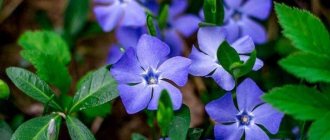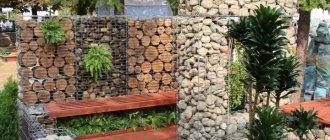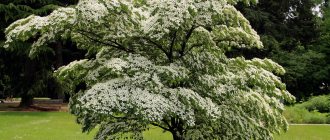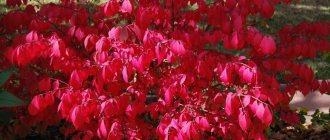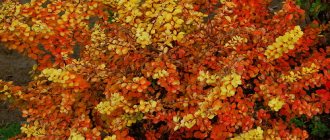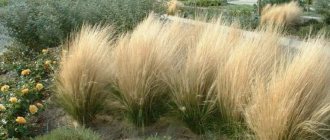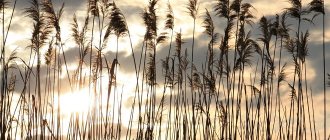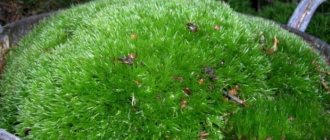What are small architectural forms (SAF)
This is the name for structures used to decorate the territory of a garden plot or cottage. In addition to their decorative function, they also have practical significance. Such objects help to conveniently organize planting in areas of different sizes and create a relaxation area. They are not fundamental structures. Many types can be made with your own hands from wood, metal, or using old objects.
Purpose of the MAF
Small architectural forms are used for several purposes:
- decorative (territory decoration) - openwork gazebos, alpine slides, statues, light bridges, sculptures, fountains;
- functional (have a practical purpose) - flowerpots, flower beds, pergolas, vertical flower beds and other structures for plants, stairs, garden furniture, swimming pools, gazebos, fences of various types;
- entertaining - architectural forms for sports and gaming purposes, for example, sandboxes, slides, swings, horizontal bars and others.
Many types of MAF are universal. They simultaneously transform the site and have practical value. These include gazebos, lanterns, swimming pools, garden benches, and flowerpots.
Transformed relief
- Retaining walls:
- Green slopes
- Artistically processed relief (geoplastics)
- Game terrain
- Stairs
- Ramps
Coating
- Monolithic coating
- Large slabs
- Small tile
- Made from natural stone
- Made from crushed stone or pebble material
- Sand and gravel
- Lawn
Features of the main types of MAF
Decorative elements of landscape design differ in purpose, appearance and material from which they are made. But they all create the integrity of the perception of the space surrounding the house or cottage.
Benches
This element is present in almost all areas. Forged, wooden, metal benches of different sizes and shapes are convenient not only for relaxation. They are part of landscape design, and often its key element. A common option is to place benches where garden paths meet. They are also placed at the entrance to a house or site, in gazebos, near the bathhouse and in other places.
Sculptures
The easiest way to decorate an area is to put up garden figurines. They are interesting because they are quickly and easily made by hand from a variety of materials. For example, old tires, pieces of wood, and plastic containers can be used as a basis for creating original outdoor sculptures.
There are also many ready-made options made of plastic, concrete, stone, ceramics, metal, plaster, and marble. They differ in size and appearance. You can make unusual compositions from them.
Lanterns
Lanterns are installed to illuminate the area and decorate it. The best places for this are in front of the house, along the paths, next to the recreation area. There are monumental structures made of concrete or stone, and light and exquisite forged ones.
You need to choose products based on style, material and type of food. In sunny regions, solar-powered lanterns are convenient, but classic electrical devices are practical and versatile.
Gazebos, rotundas, pavilions
In large and small areas there is always a place for a gazebo. It will protect from rain, shelter from strong winds and hide from the hot sun. This is a beautiful and practical design for relaxation, which can be used as a central element when arranging relaxation areas on the site. A good place for it is a garden or the shore of a pond. These types of MAFs are made with open or closed walls, with roofs of different shapes, made of metal, wood, stone.
If the area is large, you can install several gazebos or a pavilion. It is convenient if you often plan to gather with a large group to relax with a barbecue or barbecue. For areas in a classic style with a large house, a rotunda is suitable - a round gazebo with supports in the form of columns.
If the recreation area is combined with a living area, then you can attach a canopy made of wood or metal to the house. Combined options look interesting; for example, metal racks can be decorated with fabric. And climbing plants and shrubs planted around the perimeter of the gazebo, pavilion or canopy will additionally decorate the structures and enhance their shelter function.
What materials are they made from?
Small architectural forms are made of metal, concrete, wood, fiberglass and other materials. The choice depends on the style in which the design of the entire territory is made, as well as on the desires and capabilities of the owners of the garden or dacha.
Concrete
Concrete is often used to decorate large areas, especially those furnished in a colonial or modern style. Designs made from it are durable, have a luxurious appearance and are practical. Cons: high price and heavy weight. Because of these shortcomings, they are used less often in comparison with wooden decor. Most often, urns, garden sculptures, bridges, fountains and grottoes are made from concrete.
Metal
Metal MAFs are more popular, especially forged products. They are durable, suitable for different styles, but require regular maintenance. Swings, benches, gazebos, arches, bridges and fences are made from metal.
Wood, plywood, logs
Architectural elements made from this material are lightweight, durable and suitable for most garden styles. MAF is usually made from wood:
- for recreation areas - terraces, gazebos, patios, outdoor furniture;
- for climbing plant species - arches, trellises, pergolas;
- decorative items - sculptures, birdhouses, animal houses;
- fences, flower beds and flower beds.
Such landscape objects go well with country or garden plots arranged in country or landscape style. For their production, not only wood is often used, but also its other derivatives and plant materials - plywood, wicker, logs.
Stone
This material is universal, highly wear-resistant, and is used in different landscape styles. All kinds of small architectural forms are made from it, but most often garden sculptures, fountains, and tables are chosen to decorate areas. The stone is varied in texture and color, which expands the possibilities of its use.
Fiberglass
Among modern artificial materials, fiberglass is often used for the production of small architectural forms. It is beautiful, durable and varied in appearance. It is made from:
- flowerpots;
- garden furniture, benches, deck chairs;
- flower beds, containers for plants, arches, pergolas;
- swimming pools, decorative ponds, fountains.
Artificial stone is also made from fiberglass, imitating granite, quartz, flagstone, marble and other materials.
Styles of small decorative forms
When choosing an MAF for a garden or cottage, it is important that the created composition is harmonious. Unity of style is one of the main requirements when arranging a site. But this does not mean that all objects should have the same design or be only wooden or forged. Using MAF, you can combine several styles in one area. The integrity of the image is also created taking into account:
- proportional relationships of elements installed in the garden, plant compositions available on the site - small flower beds, for example, are combined with low bridges, benches, small fountains, and among the apple trees near the house you can put a high pergola;
- zoning of the territory - gazebos are appropriate in the recreation area, lanterns along all paths on the site, and green hedges anywhere;
- the feasibility of using objects of the appropriate type - on a site with wooden buildings and a country-style landscape, it is better not to install garden concrete statues or openwork arches, but ceramic decor or a strictly shaped pergola would be appropriate.
History and facts
According to historical data, the Renaissance is considered the beginning of the birth of small architectural forms. During that same period of time, in Europe, most Italian gardeners, sculptors, and architects worked on reproducing park and garden areas.
In the Eastern countries of the globe, in Japan, a very important role was given to stone as the main element of a garden plot, as convincingly argued by Japanese philosophers of that time. Thus, in their opinion, the truth can only be known through contemplation of the surrounding world. Stone sculptures, like just stone in other ways, were shrouded in sacred and symbolic meaning. Even a small garden plot necessarily required the presence of stone MAFs. Unlike the ancient Japanese side, on the territory of Rus' special attention was paid to wooden products. In this side, the tree was extolled and worked on masterfully. Frequent visitors to Russian territories were animals and birds from famous fairy tales, mighty heroes and other wooden heroes of folk tales.
Carved bridge – MAFs in Russia
And therefore, decorating the site with the help of small architectural forms, at that time it was possible to easily set the desired stylistic direction. In the modern period of time, MAFs play the same meaning.
